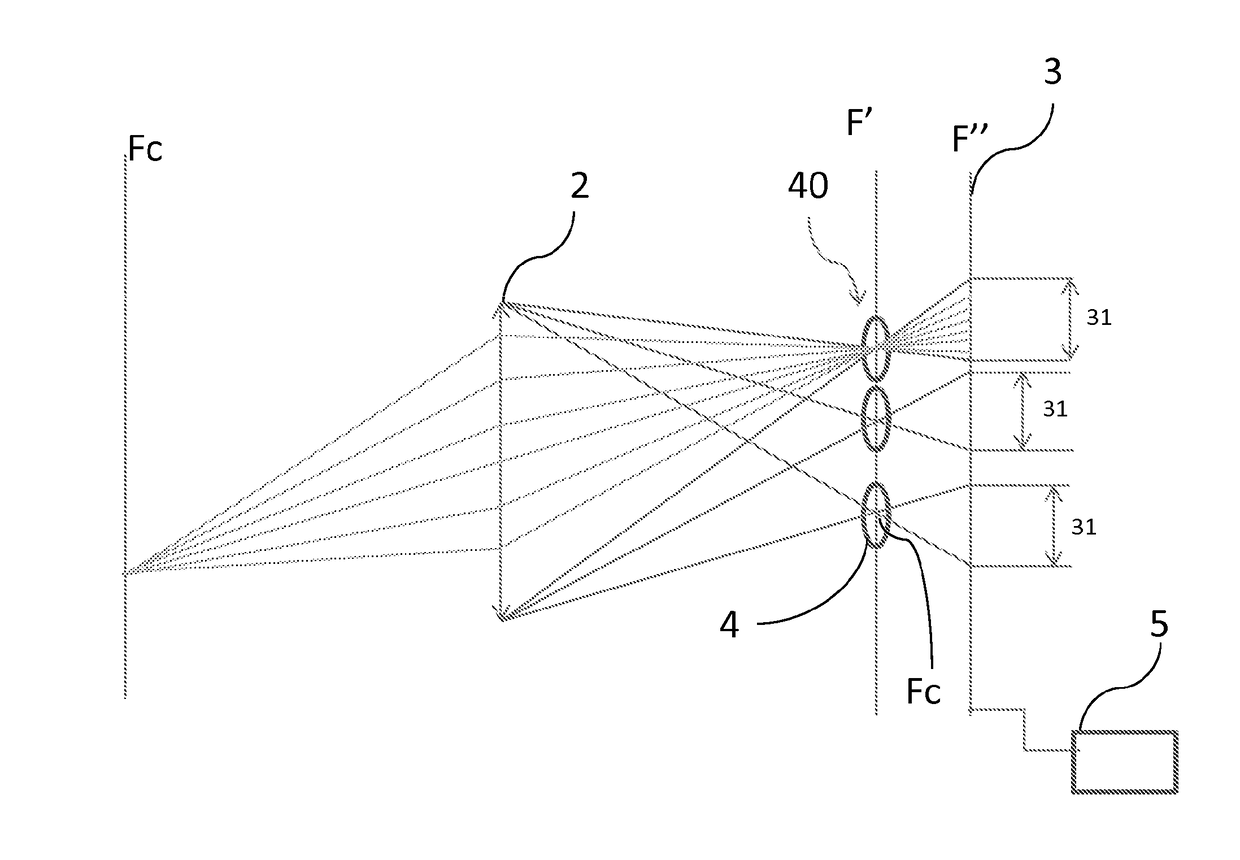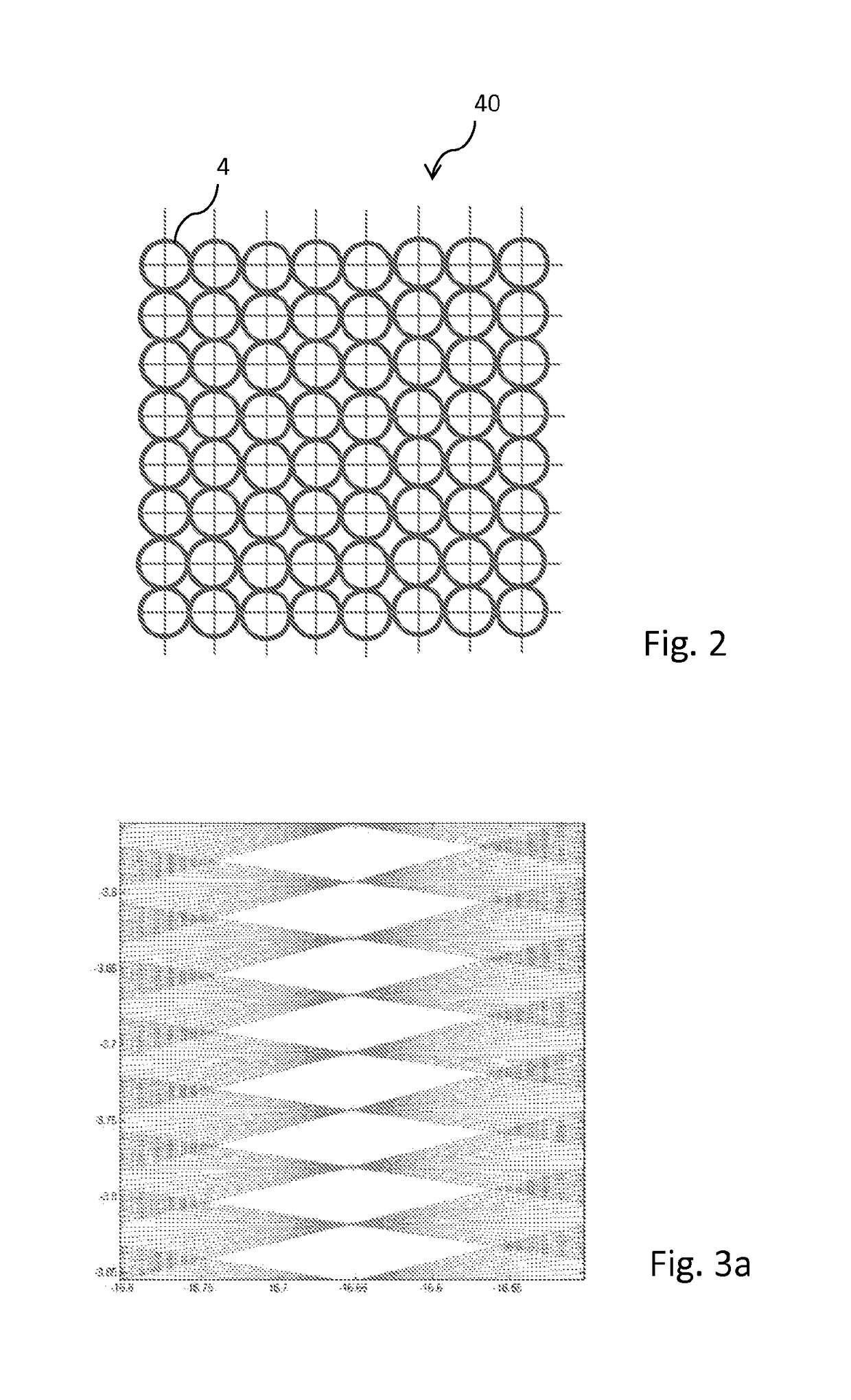Plenoptic camera
a technology of plenoptic cameras and optical lenses, applied in the field of 3d reconstruction, can solve problems such as poor overall resolution in spa
- Summary
- Abstract
- Description
- Claims
- Application Information
AI Technical Summary
Benefits of technology
Problems solved by technology
Method used
Image
Examples
first embodiment
[0076]In a first embodiment, the distance between two adjacent rows is not constant, while the distance between two columns is constant, or alternatively, the distance between two adjacent rows is constant, but the distance between two columns is not constant.
second embodiment
[0077]In a second embodiment, neither the distance between two adjacent rows, nor the distance between two adjacent columns is constant.
[0078]The distance between two adjacent rows and that between two columns is typically less than a millimeter.
[0079]The distance between two adjacent rows and / or that between two adjacent columns is typically selected from a range of values comprised between + and −5% of a mean value.
[0080]Alternatively, the distance between two adjacent rows and / or that between two adjacent columns is typically selected in a range of values comprised between + and −10% of a mean value.
[0081]The distance between two adjacent rows, respectively two columns, is irregular if it is not possible to deduce it from the knowledge of all the other distances between adjacent rows, respectively columns, or if it is necessary to know the distances between at least twenty adjacent rows, respectively twenty columns, to deduce it.
[0082]The distance between two adjacent rows, and / o...
PUM
 Login to View More
Login to View More Abstract
Description
Claims
Application Information
 Login to View More
Login to View More - R&D
- Intellectual Property
- Life Sciences
- Materials
- Tech Scout
- Unparalleled Data Quality
- Higher Quality Content
- 60% Fewer Hallucinations
Browse by: Latest US Patents, China's latest patents, Technical Efficacy Thesaurus, Application Domain, Technology Topic, Popular Technical Reports.
© 2025 PatSnap. All rights reserved.Legal|Privacy policy|Modern Slavery Act Transparency Statement|Sitemap|About US| Contact US: help@patsnap.com



